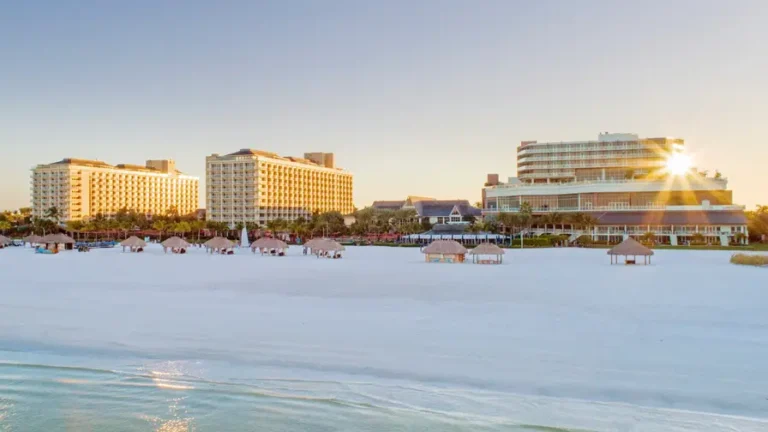By PEPPER UCHINO

Of all Florida’s natural wonders, there is nothing quite like stepping onto a stretch of white sand beach and gazing at the beckoning azure waters beyond. In fact, Florida’s identity as a worldwide destination is inseparable from our famous beaches.
From Pensacola to Fernandina Beach, our peninsula boasts 825 miles of sandy beaches – more than any other state. With consistent top-10 rankings, our beaches drive our state and local economies, but are also critical habitats for endangered species, such as sea turtles and shore birds. For the state’s resilience strategies, beaches and dunes are critical components of the state’s coastal defenses, often serving as the last line of defense against storm surge and flooding. They truly are one of Florida’s most valuable natural resources.
There is some bad news, however. The Florida Department of Environmental Protection (FDEP) has designated 432.5 miles of beaches, critically eroded from acute storm events and commonly a chronic condition due to inlets interrupting the flow of sand. Eroded beaches can no longer provide the same benefits to nature, infrastructure protection, or local economies as healthy beach and dune systems do. That is why it has been the declared policy of the state since 1986 with the passage of the Dennis L. Jones Beach and Shore Preservation Act (as amended) that restoration and nourishment are the most efficient methods to combat erosion. But even with decades of active management, including partnership with the federal government since the 1960s, our beaches are still in trouble and may get worse.
Recently, the U.S. Army Corps of Engineers (USACE) reinterpreted the laws governing nationwide beach nourishment and storm damage recovery efforts, which has caused nearly 20 of Florida’s federal beach projects to be deemed non-policy compliant, halting the federal government’s participation in those projects. To put that in perspective, there are 253 miles of managed beaches in Florida, and 146.5 miles are federal projects.
What’s the problem? Easements, specifically perpetual easements. Section 103(d) of the Water Resources Development Act (WRDA) of 1986 prohibits federal funding of benefits to privately-owned shores where use is limited to private interests. To be clear, the state fully supports public use and access on publicly funded beach restorations and nourishments. It is enshrined in Florida statute through the erosion control line, enacted in 1970, which delineates public and private property rights before a beach can be restored, and was further reinforced in 1986 (Ch. 161, F.S.), which requires adequate public access to a project for eligibility for state funds.
On the federal side, in order to comply with Section 103(d), USACE issued guidance in the mid-1990s for federal beach projects indicating that the minimum estate necessary for those projects is the perpetual easement. Even though Congress authorizes each project for only 50 years, USACE’s interpretation is that projects remain authorized, at least for storm damage recovery, in perpetuity unless deauthorized by Congress. In other words, still not perpetual, but it does require an act of Congress.
There are many problems with the current USACE policies, but two are seminal. The first is that property owners in Florida are being asked to give the federal government a perpetual property right for a non-perpetual benefit. Property owners should not be subject to hypotheticals as a basis in law to obtain their easements. The second is that USACE requires the securing of 100 percent of the perpetual easements before commencing a project and does not allow the state or local government to pay for sand placement on any parcel not subject to an easement. Even one holdout can derail miles of beach nourishments.
Congress has taken notice, and WRDA 2022 required USACE to analyze and provide recommendations on easements to congressional committees by the end of 2023. The report was transmitted in late April of this year and indicated USACE recommends no changes to its policies even though it recognizes significant issues in Florida. To further confuse the situation, on May 13, the Assistant Secretary of the Army for Civil Works (ASACW) sent a memorandum to the USACE Commanding General directing him to allow for flexibility in the application of easement policies in Florida; however, there appears to be significant disagreement within USACE itself on how to implement such flexibility. We need Congress to act.
To this end, our association and other coastal stakeholders are urging Congress to include language in WRDA 2024 that will grandfather Florida’s existing projects. USACE and the ASACW, through their reports and memos, have indicated this is a Florida-specific problem, so we are seeking a Florida-specific solution. In a rare sign of the times and further evidence of the gravity of this problem, just this June letters were sent to the chairs and ranking members of the Senate and House committees developing WRDA 2024 containing the signatures of every member of the Florida delegation in support of a fix for Florida.
Having just entered what is predicted to be an active hurricane season, further delay is irresponsible and unnecessarily risks lives, property, and critical habitat. If you want to help, please contact your representative and tell them you support their efforts to include a fix for Florida in WRDA 2024.
Pepper Uchino is the president of the Florida Shore & Beach Preservation Association, whose mission is preserving Florida’s world-renowned beaches. He has practiced environmental law and policy development in Tallahassee for nearly 20 years.


























